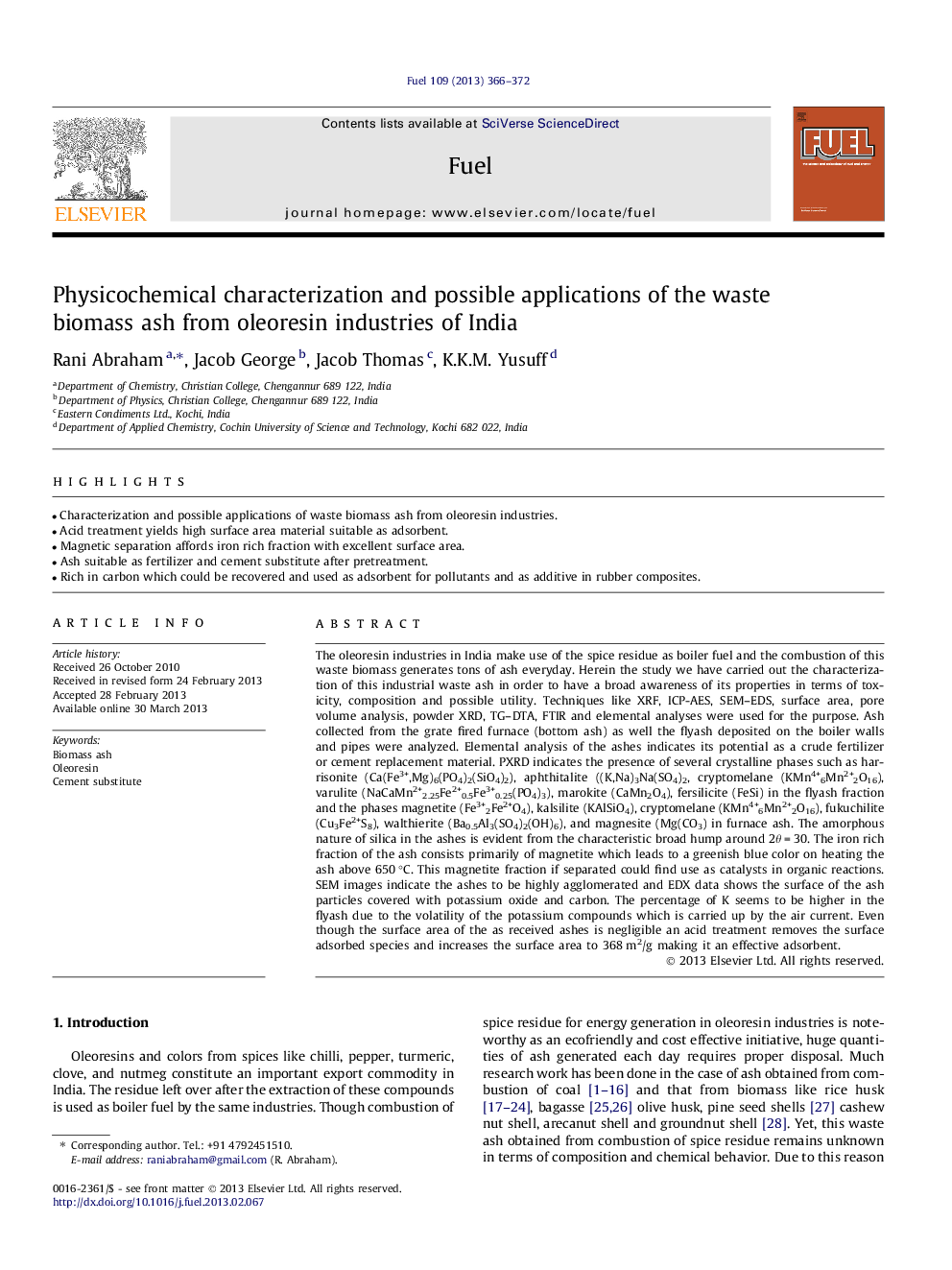| کد مقاله | کد نشریه | سال انتشار | مقاله انگلیسی | نسخه تمام متن |
|---|---|---|---|---|
| 6641276 | 461165 | 2013 | 7 صفحه PDF | دانلود رایگان |
عنوان انگلیسی مقاله ISI
Physicochemical characterization and possible applications of the waste biomass ash from oleoresin industries of India
ترجمه فارسی عنوان
خصوصیات فیزیکوشیمیایی و کاربرد های احتمالی خاکستر زیست توده زیست توده از صنایع روغن زیتون هند
دانلود مقاله + سفارش ترجمه
دانلود مقاله ISI انگلیسی
رایگان برای ایرانیان
کلمات کلیدی
خاکستر زیست توده، اولورسین، جایگزین سیمان،
موضوعات مرتبط
مهندسی و علوم پایه
مهندسی شیمی
مهندسی شیمی (عمومی)
چکیده انگلیسی
The oleoresin industries in India make use of the spice residue as boiler fuel and the combustion of this waste biomass generates tons of ash everyday. Herein the study we have carried out the characterization of this industrial waste ash in order to have a broad awareness of its properties in terms of toxicity, composition and possible utility. Techniques like XRF, ICP-AES, SEM-EDS, surface area, pore volume analysis, powder XRD, TG-DTA, FTIR and elemental analyses were used for the purpose. Ash collected from the grate fired furnace (bottom ash) as well the flyash deposited on the boiler walls and pipes were analyzed. Elemental analysis of the ashes indicates its potential as a crude fertilizer or cement replacement material. PXRD indicates the presence of several crystalline phases such as harrisonite (Ca(Fe3+,Mg)6(PO4)2(SiO4)2), aphthitalite ((K,Na)3Na(SO4)2, cryptomelane (KMn4+6Mn2+2O16), varulite (NaCaMn2+2.25Fe2+0.5Fe3+0.25(PO4)3), marokite (CaMn2O4), fersilicite (FeSi) in the flyash fraction and the phases magnetite (Fe3+2Fe2+O4), kalsilite (KAlSiO4), cryptomelane (KMn4+6Mn2+2O16), fukuchilite (Cu3Fe2+S8), walthierite (Ba0.5Al3(SO4)2(OH)6), and magnesite (Mg(CO3) in furnace ash. The amorphous nature of silica in the ashes is evident from the characteristic broad hump around 2θ = 30. The iron rich fraction of the ash consists primarily of magnetite which leads to a greenish blue color on heating the ash above 650 °C. This magnetite fraction if separated could find use as catalysts in organic reactions. SEM images indicate the ashes to be highly agglomerated and EDX data shows the surface of the ash particles covered with potassium oxide and carbon. The percentage of K seems to be higher in the flyash due to the volatility of the potassium compounds which is carried up by the air current. Even though the surface area of the as received ashes is negligible an acid treatment removes the surface adsorbed species and increases the surface area to 368 m2/g making it an effective adsorbent.
ناشر
Database: Elsevier - ScienceDirect (ساینس دایرکت)
Journal: Fuel - Volume 109, July 2013, Pages 366-372
Journal: Fuel - Volume 109, July 2013, Pages 366-372
نویسندگان
Rani Abraham, Jacob George, Jacob Thomas, K.K.M. Yusuff,
